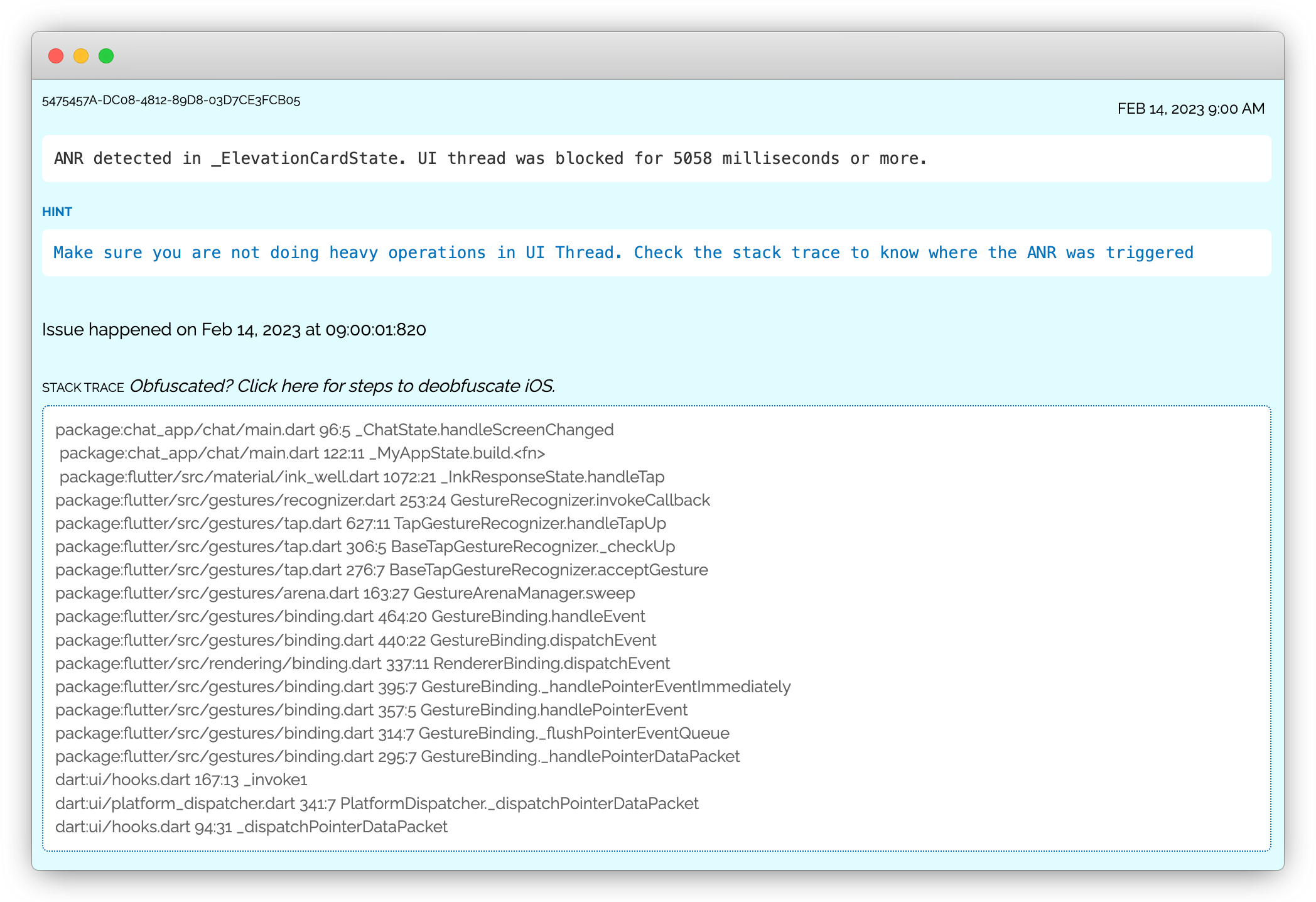Detecting and Fixing ANR (App Not Responding) in Flutter apps (Android).


ANR, or Application Not Responding, is a prevalent issue that can occur in Android applications, including those developed using Flutter. It happens when an application becomes unresponsive to user input for a period of five seconds or more.
During an ANR event, the application seems to freeze and becomes unresponsive to any user interaction. The system then presents the user with a dialog that the application is not responding, offering the user an option to either close the application or wait for it to respond.
This situation can lead to a frustrating user experience, as it interrupts the flow of the user's interaction with the app and can lead to data loss in certain cases where the user's recent actions were not saved before the application became unresponsive. Therefore, ANR events can significantly affect an application's user experience and can potentially discourage users from continuing to use the app.
ANR events are mainly concerned with responsiveness from the perspective of the user experience. It is essentially a mechanism that the Android system employs to ensure that users are not stuck with an unresponsive application for an extended period. It acts as an indicator that something is wrong within the app's execution, usually pointing to areas in the app's lifecycle where lengthy operations are being performed on the main thread, thereby blocking user interactions.
There are numerous reasons why Application Not Responding (ANR) events can occur in Android applications, including those built with Flutter.
One of the most common causes of ANRs is the execution of long-running operations on the main or UI thread. When such operations take a long time, they can block the main thread, making it unable to respond to user interactions and hence triggering an ANR.
Deadlocks and race conditions are another cause of ANRs. A deadlock occurs when two or more threads are each waiting for the other to release a resource, causing all of them to be blocked indefinitely. A race condition, on the other hand, occurs when two or more threads access shared data concurrently, and the outcome of the threads depends on the precise timing of their execution.
Unresponsive UI components can also trigger ANRs. This usually happens when an application's UI thread gets blocked, perhaps due to a long-running operation, and as a result, any UI-related actions (like button presses or scrolling) become unresponsive.
Lastly, slow input/output (I/O) operations, especially those concerning the network or the disk, can also lead to ANRs. These operations can be quite time-consuming and, if executed on the main thread, can block it for an extended period, leading to an ANR.
The issue report provides the stack trace of the UI thread and associated threads. The stack trace of the UI thread will point to the line of code that triggered the ANR.
In addition to the stack trace, the activity trail, a chronologically ordered list of events that occurred prior to the issue, helps developers retrace how the user was interacting with the app.